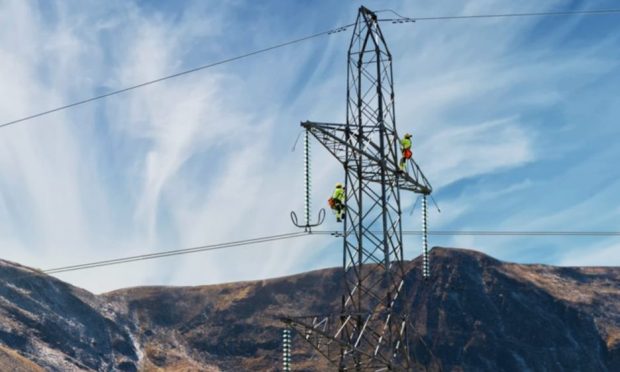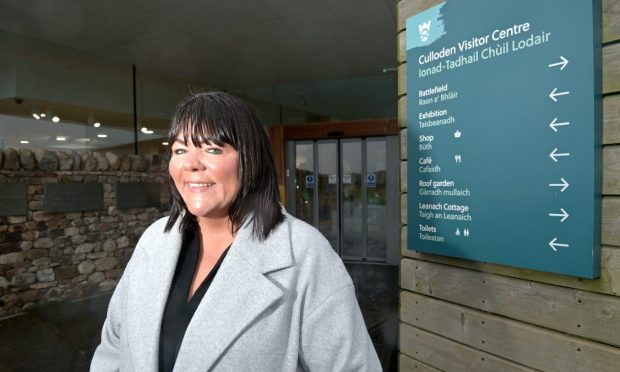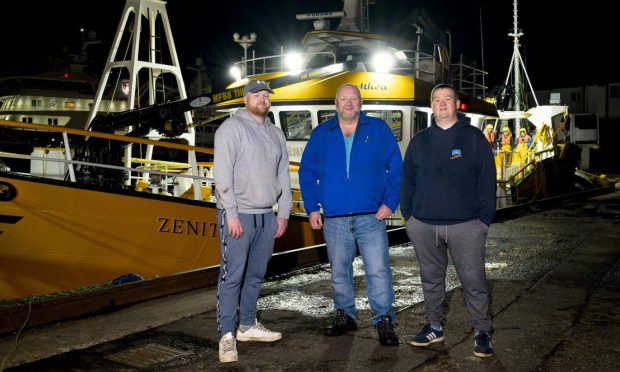Infrastructure and connectivity are the foundation building blocks that allow businesses to develop, grow and thrive.
We have all faced the twin challenges of the Covid-19 pandemic and economic shockwave that rippled through the economy and supply chain as a result of the UK’s departure from the European Union at the start of this year.
It has, therefore, never been more important for the governments in Holyrood and Westminster to prioritise the rebuilding and renewal of Scottish infrastructure to lay firm foundations for the future.
Infrastructure connects people to jobs, businesses and trading opportunities locally, nationally and globally.
Investment in new transport technologies, digital connectivity, energy transition to net-zero, rail expansion and more all have a critical role to play in reaching Scotland’s net-zero targets and returning the economy to growth in 2022.
While progress is being made by both the Scottish and UK governments, who are setting out ambitious national economic transformation strategies and levelling up plans respectively, businesses want to see greater urgency injected into vital infrastructure.
They also want to see connectivity projects creating the conditions firms need to propel the wider economy back to the pre-pandemic levels of economic growth we all aspire to.
Tackling digital inequality
Digital connectivity has never been more important to the Scottish economy.
Super-fast broadband connections have been critical throughout the Covid-19 pandemic for our businesses’ ability to operate remotely, for our young people to access effective online learning and for our workforce to remain connected.
The Scottish Government continues to address the digital inequality that exists in this country through a wide mix of policies, but the pandemic has added to the urgency to go further and faster.
Governments should work together to invest in an ambitious digital roll-out revolution that delivers gigabit-capable full fibre broadband, and also good mobile coverage to every home and business in Scotland as soon as possible.
Picking up the pace in this area will help to keep Scotland connected and internationally competitive.
Transport connections
As essential as upgrading Scotland’s digital connectivity is to economic growth, so is improving our transport connectivity and infrastructure, domestically and internationally.
Aviation and airports are at the heart of Scotland’s and the UK’s continued economic success.
They support thousands of jobs, bolster international trade and underpin the tourism sector which touches on every part of Scotland’s economy.
The business community was pleased our calls to create a new aviation strategy was finally heard by the Scottish Government.
It’s important this opportunity is used effectively to kick-start the industry’s revival and growth.
Of course, with ongoing international travel restrictions in place, it’s vital that targeted support is made available for the sector.
It is also crucial that government seriously considers the need for an aviation restart fund, route development and further financial support for Scottish regional airports.
Our counterparts in the EU are providing vital policy and financial support for the sector, and Scotland and the UK must do the same.
Aviation net-zero
Scotland should also seek to lead the way in driving the aviation industry’s net-zero agenda.
Sites including St Fergus in the north-east offer prime opportunities for the production of sustainable aviation fuel.
But about 40% of Scotland’s transport emissions come from cars, compared with just 15% from aviation.
If Scotland wants to reach its ambitious net-zero goals, much greater investment in a strategic plan to drive the adoption of low emission vehicles across the private and public sectors is necessary.
We also need infrastructure to support these vehicles, such as charging locations and hydrogen refuelling stations.
In addition, firms want to see clearer commitments and timetabling for those major infrastructure projects already under way – such as the dualling of the A9 and A96 – to give businesses in the Highlands and north-east better connections to the central belt.
These projects will boost business travel and tourism options in these regions.
Investment in new transport technologies, digital connectivity, energy transition to net-zero, rail expansion and more all have a critical role to play in reaching Scotland’s net-zero targets and returning the economy to growth in 2022.”
All these infrastructure and connectivity issues pose major challenges and opportunities for Scotland.
Government must work as closely as possible with industry if we are to realise the full potential of Scotland transitioning away from carbon-intensive industry and successfully pivoting to a sustainable, greener economy.
The rapid establishment of Scottish green and free ports will also unlock significant economic activity.
Businesses stand ready to work with government to support economic and climate ambitions.”
Meanwhile, innovative projects such as the Acorn carbon capture and storage facility in Aberdeenshire have the potential to be world-leading examples of a just transition in action.
Businesses stand ready to work with government to support economic and climate ambitions.
Collaboration will be required to access and secure the funds necessary to support investment, innovation and development across Scotland.
By securing and investing in our connectivity, Scotland can create a collaborative, digital and low-carbon economy that celebrates unique Scottish localism, while at the same time attracting diverse global businesses, investors and talent.
Liz Cameron is chief executive of the Scottish Chambers of Commerce.














